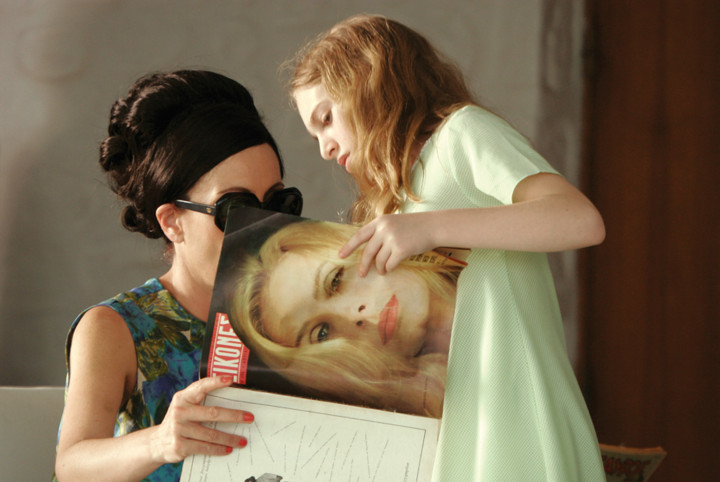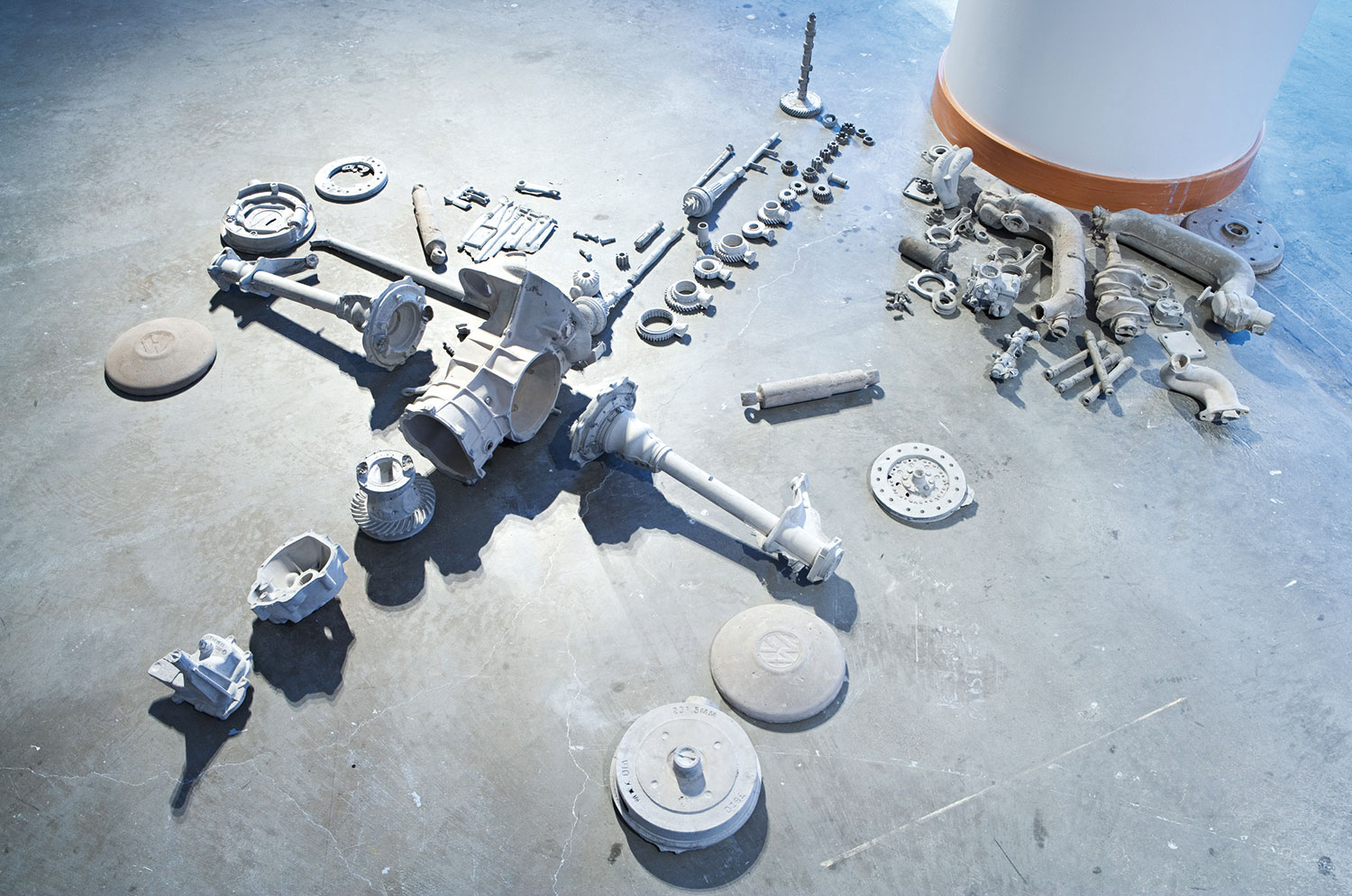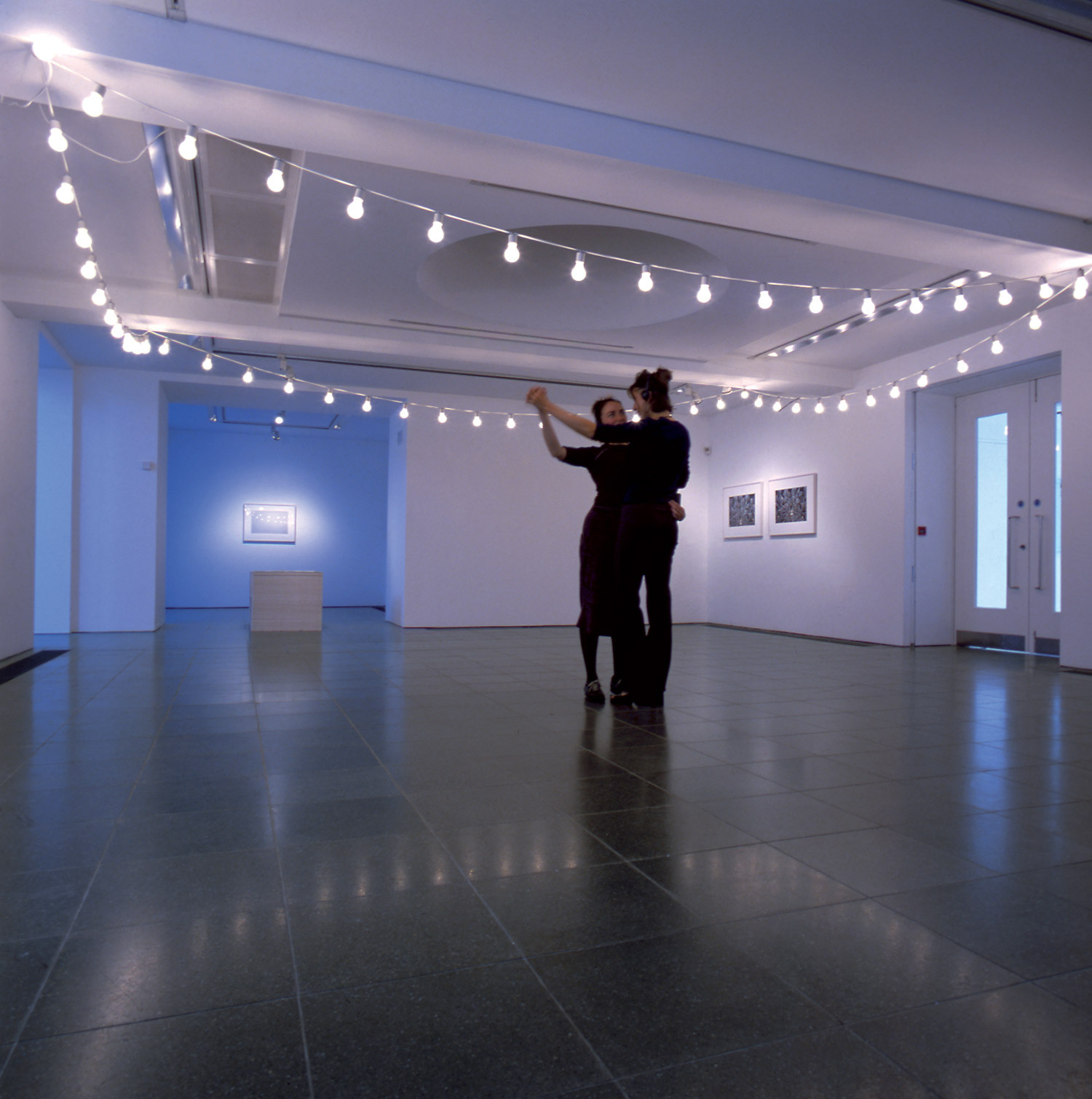
Eve Sussman’s 89 Seconds at Alcazar premiered at the 2004 Whitney Biennial. The film is a restaging of Velasquez’ Las Meninas and recreates, in stunningly lavish detail, not only the painterly space but also the moments that might have led up to the 89 seconds when the characters in the painting would have congregated in the exact configuration that Velasquez painted. Sussman is interested in exploring the intersection of real life and theatricality, and the mechanics of group dynamics with a special focus on the meaning of gesture and nonverbal expression. In this interview she talks about The Rape of the Sabine Women, the latest work of her company the Rufus Corporation, an international group of artists, performers, musicians and actors. The film was shot in Athens (at the ancient Herodion Theatre and the central meat market), the Greek island of Hydra, and Berlin (at the Pergamon Museum and Tempelhof Airport) and it features an ambitious cast, music by Jonathan Bepler (composer of Matthew Barney’s “Cremaster” cycle), choreography by Claudia de Serpa Soares, costumes by Karen Young and cinematography by Sergei Franklin, Eve Sussman and Angela Christlieb.
Katerina Gregos: Your two most recent works 89 Seconds at Alcazar and The Rape of the Sabine Women have centred on the translation of seminal historical paintings into film. I am referring to Velasquez’ Las Meninas in the first case and David’s Intervention of the Sabine Women in the latter. What led you to delve into art history in such detail and what motivates you to ‘animate’ old works of art?
Eve Sussman: Strange as it may seem I don’t think I have delved into art history in great detail. My interest in Las Meninas was much more to do with a gut reaction to a profound psychological condition that exists in the picture than any intellectual or conceptual bent. I could have just as easily had that same emotional and physical reaction to a news photo, a supermarket surveillance monitor or a situation on the street. That it happened in the Prado with Las Meninas is in a way mere happenstance. The impetus to make the piece was not born of a decision to delve into anything historical. My interest is an investigation into group dynamics and the power to insinuate narrative through seemingly banal gestures.
KG: Why did you choose these two paintings? Both are complex compositions which raise questions about representation and the act of looking.
ES: There is a psychological presence in the Velazquez that is inscrutable. The choice of the David was also based on very simple attractions — the physicality of a fight scene involving men, women and children. However, the relationship of our new piece to David’s Intervention of the Sabine Women has become quite oblique. The painting came into play as a very early inspiration that led us to the original myth and then a decision to do a modern interpretation of the myth. Simultaneously we were looking at war photography, rock concert films, mob scenes and plenty of other contemporary images for inspiration.
KG: Both The Rape of the Sabine Women and 89 Seconds at Alcazar can quite simply be described as moving paintings. Do you see painting and film as having a particular relationship?
ES: I don’t think there is a strong relationship between painting and film. The problems of the painter are not the problems of the filmmaker and vice versa. Certainly our new piece, The Rape of the Sabine Women, does not fit the description of a moving painting.

KG: In the case of both these films we are not talking about mere appropriation but a whole elaborate process of research and production which transcends the limits of ‘video art.’ Can you explain more about your particular approach to appropriation — or perhaps I should say referencing — which has nothing to do with the appropriation tactics of neo-conceptual art of the ’90s?
ES: I don’t think what the Rufus Corporation does is appropriation. Reinterpretation maybe. I find the appropriation tactics of neo-conceptual art rather loathsome, cynical and smarmy. Rufus is made up of improvisers. We improvise with the cameras, the musicians with the music, the choreographer with the movement and the actors with their performances. Each location had a rough theme or chapter within our story — which we improvised around before production. Once the crew came in it was a veritable free-for-all based on the practice and knowledge of our previous free-for-alls. Our development process is probably most akin to contemporary dance and theater. Our “elaborate process of research and production” does indeed “transcend the limits of ‘video art,’” in that our research takes place equally in the studio as it does on location. The research is as much about the subject at hand as it is about what happens when a group of people have to endure each other for periods of time.
KG: Both 89 Seconds at Alcazar and The Rape of the Sabine Women were made by you in collaboration with the Rufus Corporation. What is the Rufus Corporation and what is your role in it?
ES: The Rufus Corporation is the company I formed with the creation of 89 Seconds at Alcazar with many of the primary cast and crew who took part in that piece. The company in structure is not all that different than other experimental dance and theater companies, except for the fact that we exist and exhibit in the art world.
KG: The Rape of the Sabine Women is a contemporary rendering of the myth. What exactly happens in the film?
ES: Taking the ancient myth as inspiration, the film is a contemporary retooling of the story as an epidemic love triangle that goes awry. A group of foreign men abduct/seduce local women in a market. In our modern twist to the narrative the thieving ‘agents’ who initially stole from strangers, begin to steal from each other. They incite their own battle that snowballs, in which the women and children become embroiled. The result is a picture of the exhilaration and the futility of the fight. Unlike the myth there is no winner, no reconciliation. We see the story as having five stages, each of which correlates to a different location that has a metaphorical relationship to the scene. These could be named as: Fate/mission; meeting; abduction; domestication; and fight. From the 140 hours of footage we returned with, I culled two seperate and distinct works. One is The Rape of Sabine Women, the story we set out to make. It will be a single-screen video piece with original score by Jonathan Bepler. The second piece is a four-channel video installation made up entirely of improvisations at the Valsamakis house, a modernist house in Anavyssos, on the southern coast of Athens.
KG: You’ve described the film as being poised between cinéma vérité and a script. How was this achieved?
ES: We did not have anything like a traditional script. We had an outline that approximated something of a rough shooting script. Within each space the actors improvised coming up with relationships and a certain demeanour. We began with exercises that included things like people trying to communicate across a room without speaking or moving from their chair.
KG: Your films don’t have a plot, but a strong pictorial or visual narrative of a symbolic or metaphorical kind. Your interest seems to be more in gesture that implies narrative and in expression in nonverbal terms. Can you tell me more about this approach to narrative?
ES: The attraction to a nonverbal approach comes first from a background in still photography and years of video and filmmaking with Super-8 and surveillance cameras, and second from a preoccupation with the energies inherent in any given group situation. In both these situations tone trumps language. These two films — both studies in group dynamics, one akin to high costume drama, the other more allegorical — could easily capitulate to parody. You only have to look at any number of big-budget period dramas to know what I’m talking about. In a sense what saves these two works is the power of narrative implied in gesture as opposed to blatant narrative relayed through dialogue. If my work is successful the fiction is actually supplied by the viewer.
KG: The music is also an integral part of the film.
ES: Certainly the piece will be driven by the music and the manner in which we recorded live, on location. There is a living edge and rawness to the sound that I don’t think is achievable when a score is created after the fact in post-production. I was adamant that I did not want the music to be psychologically disjointed from the action and that even if we had to compromise fidelity we would gain something by recording the music live in performance as the actors were improvising.

KG: Architecture also plays an important role. How and why?
ES: Essentially The Rape of the Sabine Women is about the incongruousness of domesticated life with the feral condition of the human psyche as an eternally confounding paradox. The ability to create but complete lack of ability to maintain a civilized society is manifested profoundly in the way we build and destroy buildings. War and architecture are the two obvious ways for man to exert power. Since in our story the characters are attempting to exert power over each other, the choice of architectural sites that communicate the ambition, power and the utopian dream seemed an obvious one. The more power conscious the planners the more formal and grand the design.
KG: Though The Rape of the Sabine Women looks to the past for its subject matter, the interpretation is a modern one. The drama is set in the ’50s and ’60s. What is the reason for choosing this period?
ES: My serious consideration of the period came when our production manager and fellow artist Jannis Savvides took me location scouting to the Nafplia Palace Hotel. An aficionado of modern architecture in Greece, he proceeded to make me aware of the often overlooked legacy of Greek modernism. What seemed to me compelling about Athens was not its ancient history, but its early modern history that still wrests in a proud collective unconscious as if it were yesterday. I think many people of my generation are fixated on the ’60s. In addition to the fact that the architecture and design of the period is phenomenal and the roles of men and women were for the most part dye cast, giving a basis to the allegorical characters, the credo of “better living through design” was the perfect utopian counterpoint to the dissolution and collapse of the final scene of The Rape of the Sabines.
KG: In both films it seems that you are also trying to capture Cartier-Bresson’s ‘decisive moment’ — the perfect image or setting. To what extent have you been influenced by photography?
ES: Although my art career for more than ten years was as an installation artist, I have been making photographs for almost thirty years. What you refer to as Cartier Bresson’s ‘decisive moment,’ I would probably call the ‘pregnant pause’ of the snapshot or the ‘stolen gesture’ of the video surveillance monitor. I have absolutely no interest in the take-counter-take vernacular that is shoved down people’s throats in film schools that lacks any kind of formal challenge let alone metaphorical sensitivity. I believe it is possible to make a video where you can pause the image anywhere and have a compelling image. That was certainly a goal in 89 Seconds at Alcazar.
KG: If you see, as you’ve said, Las Meninas as the ultimate cinéma vérité artwork, how, by comparison, do you see the Intervention of the Sabine Women?
ES: If Las Meninas is the ultimate cinéma vérité artwork, one would have to see the Intervention of the Sabine Women as the ultimate cartoon. And subsequently much of what we have done has a sort of cartoony theatricality befitting the story and that painting as our inspiration.
KG: In both works there is an interest in gesture and emotion, stronger and more pronounced in The Rape of the Sabine Women, quieter and more subtle in 89 Seconds at Alcazar. What kind of response do you expect from the viewer?
ES: Rapt attention would be nice.





